Lindane in Barakaldo: the end of the nightmare closer
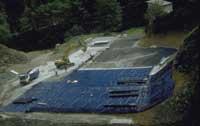
In the late 1950s, organochlorine products began to be used as pesticides or insecticides. One of the most used was lindane. For years the use of lindane in agriculture, selviculture, veterinaria and human health was done in any way because it is a broad-spectrum insecticide that serves both to kill phytophagous insects or insects that inhabit the soil and to kill parasites of animals or humans. Thus, in 1984 there were 5,000 tons of lindane in the world. Subsequently it has been discovered that it can be more dangerous than was thought and is currently replaced by other substances.
Lindane is one of the hexachlorocyclohexane isomers called HCH to shorten, and the raw materials for its production are chlorine and benzene. Five mixed isomers are obtained from the reaction, and then separate the lindane from the rest. This means that in this process many residues are generated, which do not serve at all. Specifically, for each kilo of lindane produced 9 kilos of HCH residues are generated, all of them highly toxic.
Lindane in Bizkaia
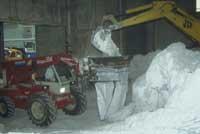
One of the companies producing lindane is Bilbao Chemicals de Barakaldo. It began production in 1947 and did so until 1987. Between 1947 and 1953, the entire HCH produced by Bilbao Chemicals was sold as an insecticide and in 1953 the lindane began to separate from the rest of isomers. Since then, only lindane has been marketed and, of course, the amount of waste has overflowed to the company. The start of uncontrolled dumping of waste is a proof of this is the existence of a HCH residue throughout Barakaldo. In 1986 the administration imposed on the company the exit of HCH waste from the production center, so it proceeded to its deposit in the pavilions of Barakaldo. Given the lack of space for more, Bilbao Chemicals decided to close the company in 1987. In the pavilions of Barakaldo 4,500 tons of HCH were deposited in pure state and it is estimated that during the activity 66.000 tons of waste were poured.
The company Nexana Industrias Quimicas de Asua evolved similarly. The company's activity began in 1952 and in 1974 the lindane was separated from the rest of isomers. The consequence of this attitude was the same that occurred in Barakaldo: The company was closed in 1982 and by then there were 18,400 tons of lindane and 7,000 tons of uncontrolled dumping. Since then, the heritage of the chemical industry developed in Bizkaia in the 50s has its own name: lindane.
Looking for definitive solutions
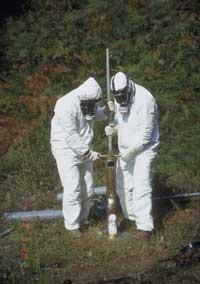
At present there is no lindane in the Basque Country, but the closure of both companies has not solved the problem. What to do with the dispersed waste in the vicinity of the production areas and with the pure HCH of Barakaldo? Once the answer to this question has been found, the lyndane nightmare will definitely end.
The Department of Land, Housing and Environment Planning of the Basque Government presented in November 1995 its initiative to promote the solution. The Public Society of Environmental Management IHOBE promised to solve the problem raised. The elaborate report stated that the problem had two faces, on the one hand pure HCH and on the other the lands contaminated with lindane.
The lowest possible transport of pure HCH was recommended, so its treatment was allowed in the place where they were stored. The installation was launched in June 1999 and since IHOBE has been informed that by the end of this year it will proceed to its dismantling.
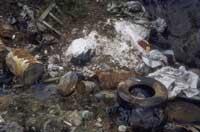
As for HCH mixed with land and other industrial waste, there is still no technically and economically viable elimination process. For this reason, it was chosen to store contaminated land in temporary security deposits until finding the technical solution to definitively solve the problem.
The Security Cells are structures for the storage of dangerous substances that isolate and prevent access to the environment. This solution has been used in other countries, such as France or Holland, and is internationally recognized.
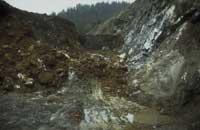
The Security Cell for the confinement of contaminated land in the right valley of the Nervión was built in 1998 in Loiu, on Bilbao airport grounds. It currently preserves 113,000 m 3 of contaminated land. The Security Cell for the Contaminated Land of the Vega Izquierdo has been located on the slopes of Mount Argalario. The works began in 1999 and on June 4 the contaminated soil has been accumulated in this warehouse. Next to the 13.700 m 3 of contaminated lands of Portugalete will also be carried 13 landfills, with a total of 300.000 m 3 of lands. The Department of the Environment estimates that the execution of the security cell will end in the first quarter of 2002, for which the armored trucks must carry out 30,000 displacements. All this under strict safety measures: to avoid dust in the air during the discharge of the trucks, a humidity system will be used, no downloads will be made when the wind exceeds 40 km/h and the transfers will be monitored by three different companies. However, due to the location of these deposits, the population of the area of Argalario has manifested more than one complaint for its proximity to streams and shopping centers.
Toxicity Lindane
In recent decades, some organochlorine substances used as pesticides have been gradually discarded because, despite being good pesticides, they generate serious environmental and health problems. The cause of these problems are two properties of organochlorine substances, their high toxicity and their ability to accumulate in living things.
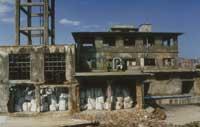
HCH is also toxic and tends to accumulate in living things. HCH is absorbed by ingestion, inhalation, or contact with the skin. HCH in high doses produces headache, weakness, fatigue, restlessness, insomnia, diarrhea, nausea, vomiting and fever, among others. Major exposures can cause ataxia and seizures and in the most severe cases can lead to coma, pulmonary edema, cardiac collapse, and even death.
On the other hand, numerous trials have been conducted on HCH carcinogen, many of which have shown that HCH can cause cancer in various animals. For this reason, it could be thought that it can also cause cancer in man, even if a complete affirmation has not been obtained. These data have been confirmed by the World Health Organization (WHO) and recommends the management of HCH as a carcinogenic product.
Due to its toxicity, the use of lindane is currently prohibited in some countries (for example, in Japan it was banned in 1971) and in others (as in the United States) harsh laws have been established regulating the use and production of lindane.
Buletina
Bidali zure helbide elektronikoa eta jaso asteroko buletina zure sarrera-ontzian










